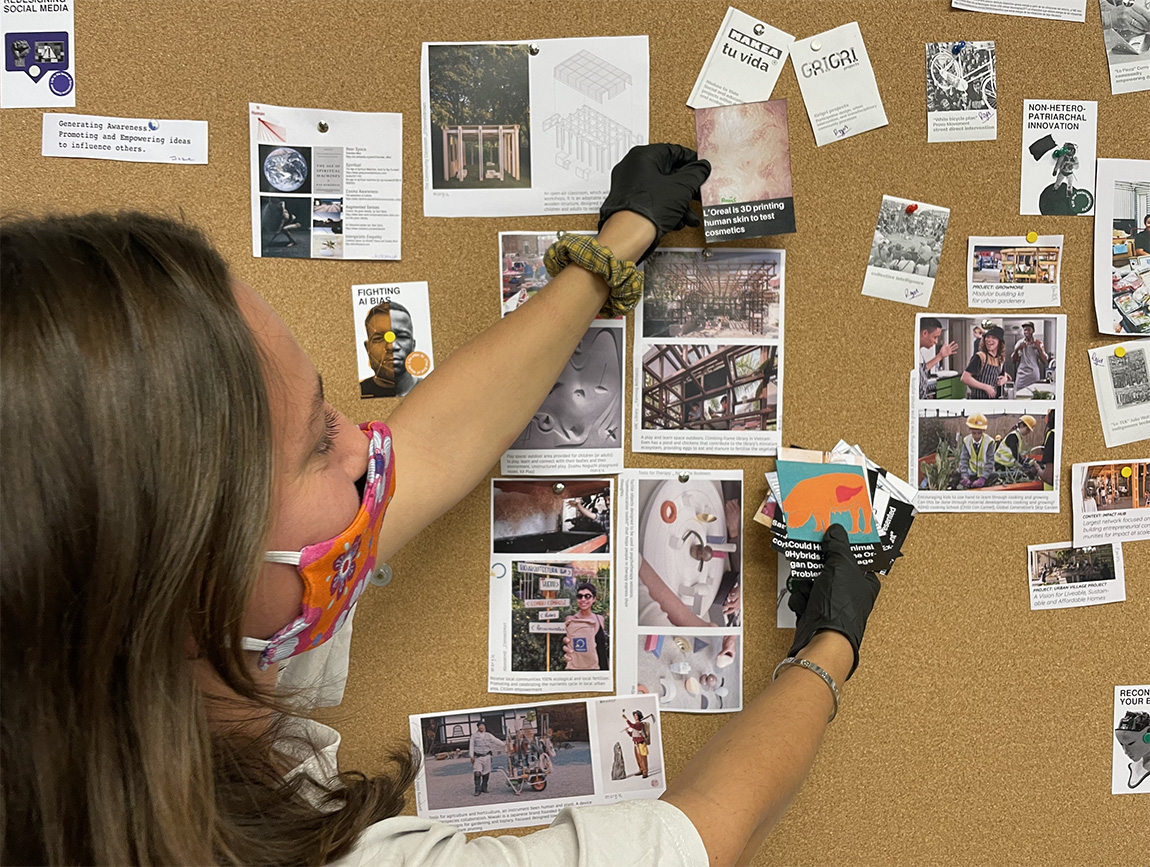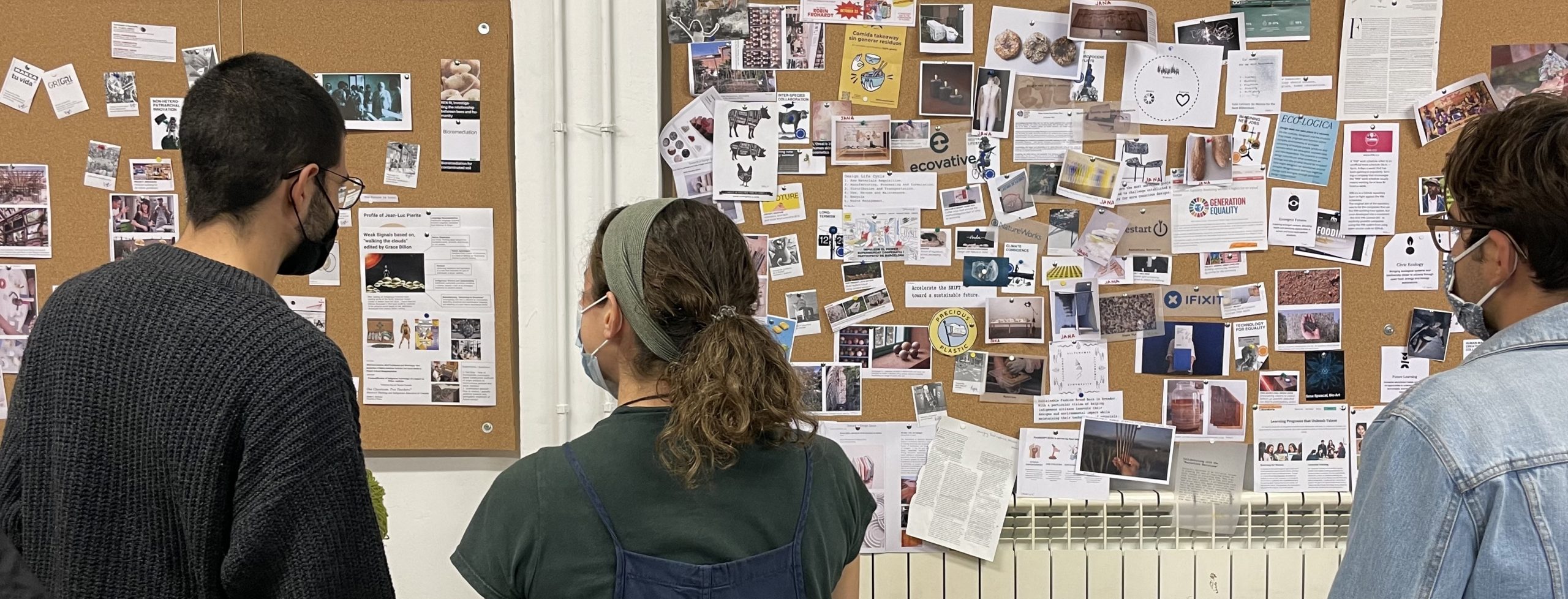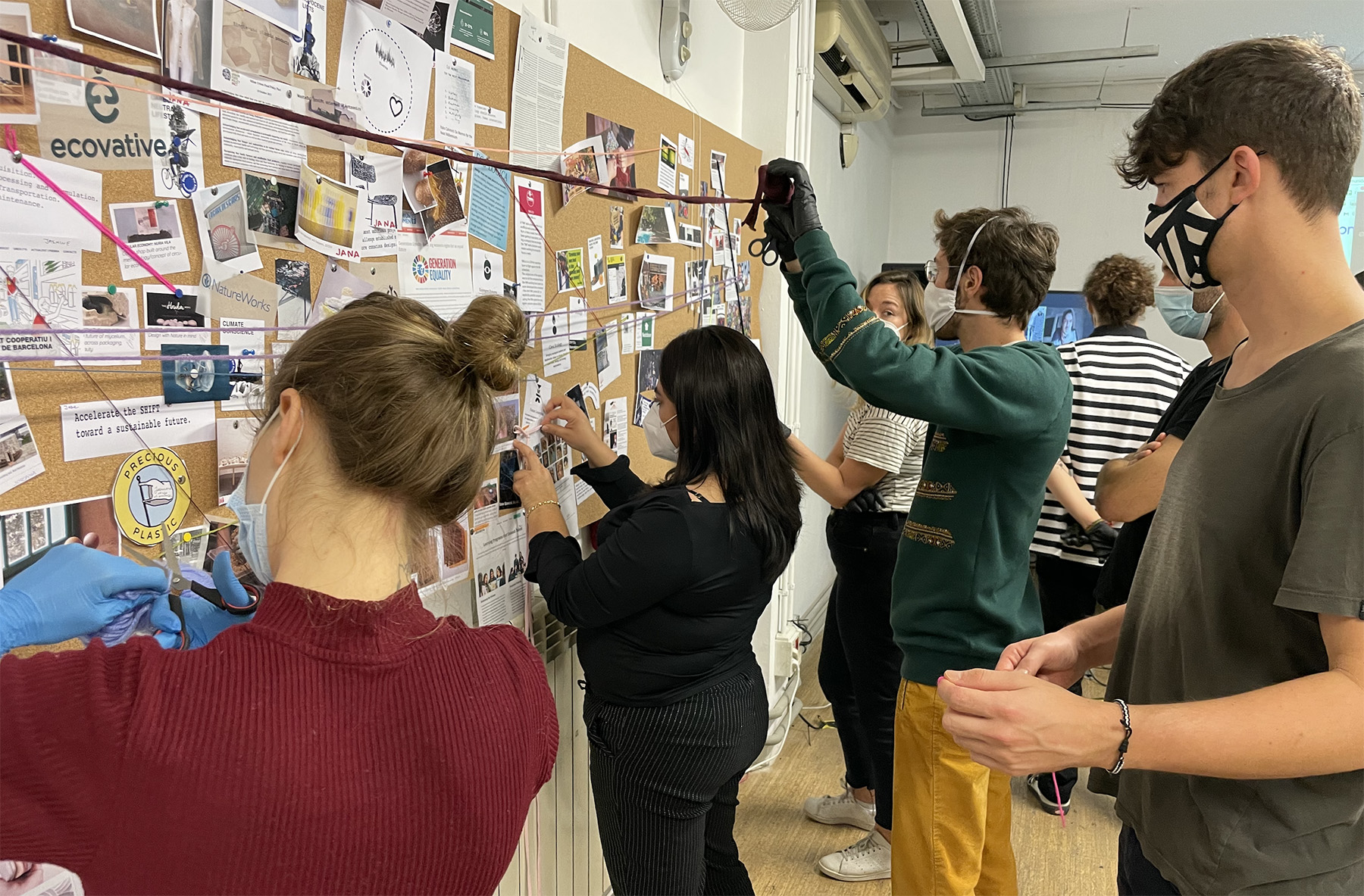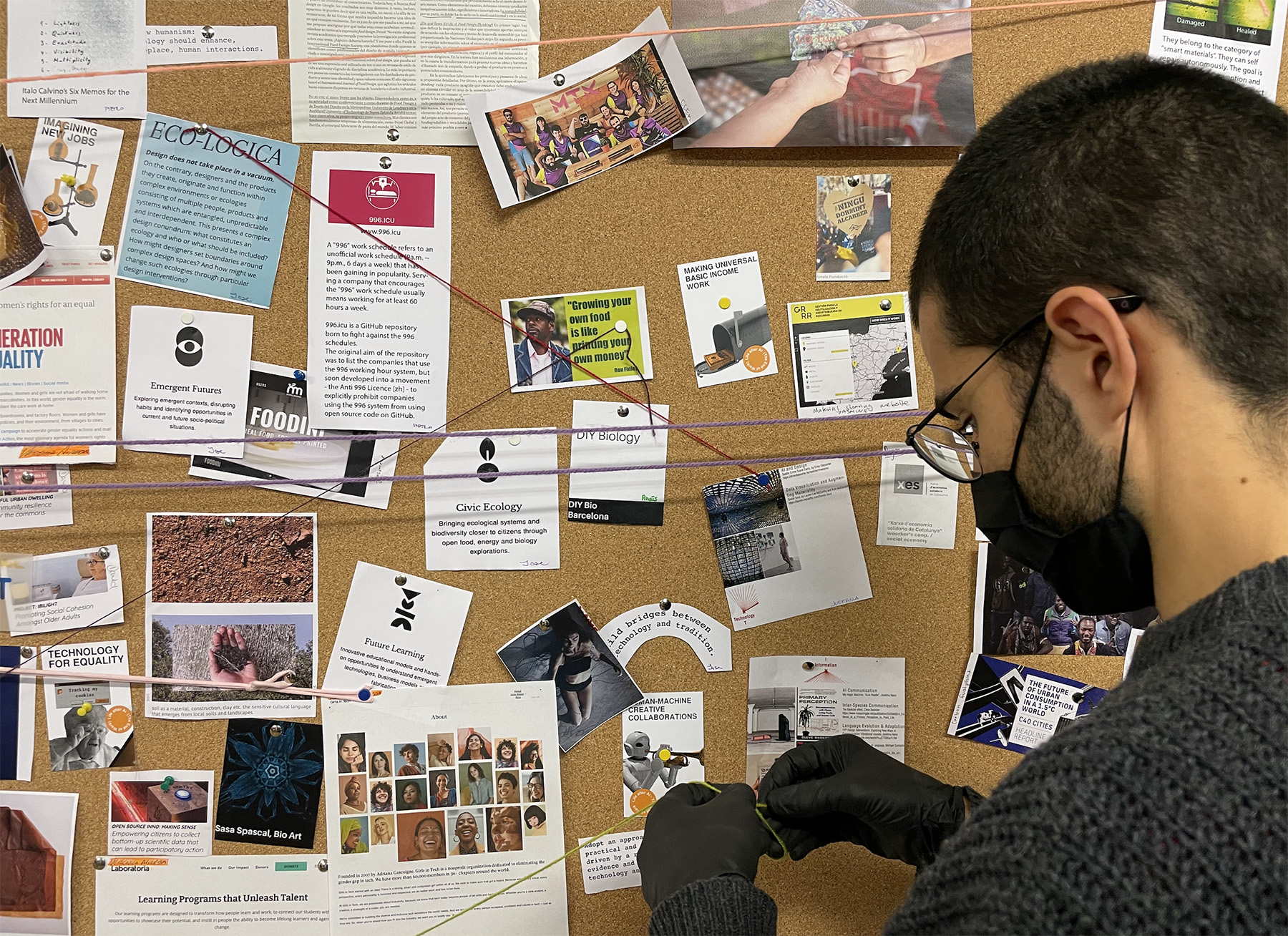The first term of the Design Studio of the Master’s Degree in Design for Emergent Futures (MDEF) aims to create a solid ground for the students to start developing their design projects. Weekly activities are set to interlink results from the courses like their mappings, cartographies, experiments, 1st person design activities, prototypes, with their personal development plan.
The Design Studio activities consist of presentations, group activities, short exercises, and personal coaching that led to propose an area of intervention at the end of the trimester.
On November 16, 2020, the Collaborative Documentation and Swarm Intelligence session was held. The activity revolved around building a collective framework to document explorations using the existing digital platforms and building a physical map of resources for the design studio. The goal was to explore and develop forms of aggregative documentation and building collective intelligence resources.


The result was a collaborative map of projects, resources, news, etc in the form of a design space that populates the students physical working space and that can support the sharing of relevant information.
A design space is a physical collection of experiments, reference objects, products, or materials that support the development of a design intervention as an action research exercise.
In detail, the students were asked to frame their prototypes and experiments in relation to their area of interest provided in the Atlas of Weak Signals (for more information about the AWS, refer to the article published in Temes de Disseny) and make these relations between students visible.
In order to do so, each student brought:
- 3 objects/products that represent the issues they were enquiring in a tangible way
- 3 kinds of materials that express some of the qualities of these issues
- 3 reference projects or initiatives that are working around those issues (pictures, blueprints, etc)
- 2 reference technologies/methodologies that are being used to investigate/attend to that problem
- 2 possible contexts in Barcelona which they would be interested to place an intervention
- 2 experiments that allow them to prototype their intervention.
All these materials were rearranged every time a student tried to make sense of the design space (always trying to keep the related materials next to each other). Lines of different colours visualise the personal relations between elements serving as a personal framing and at the same time as an invitation to collaborate.


The presented session was realised within the Master’s Degree in Design for Emergent Futures (MDEF), organised by the Institute for Advanced Architecture of Catalonia and Elisava Barcelona School of Design and Engineering, in collaboration with the Fab Academy.
For more information about the Master’s Degree in Design for Emergent Futures (MDEF), visit: https://www.elisava.net/en/masters-postgraduates/master-design-emergent-futures
Text by Oscar Tomico and Guim Espelt
Photos by Oscar Tomico